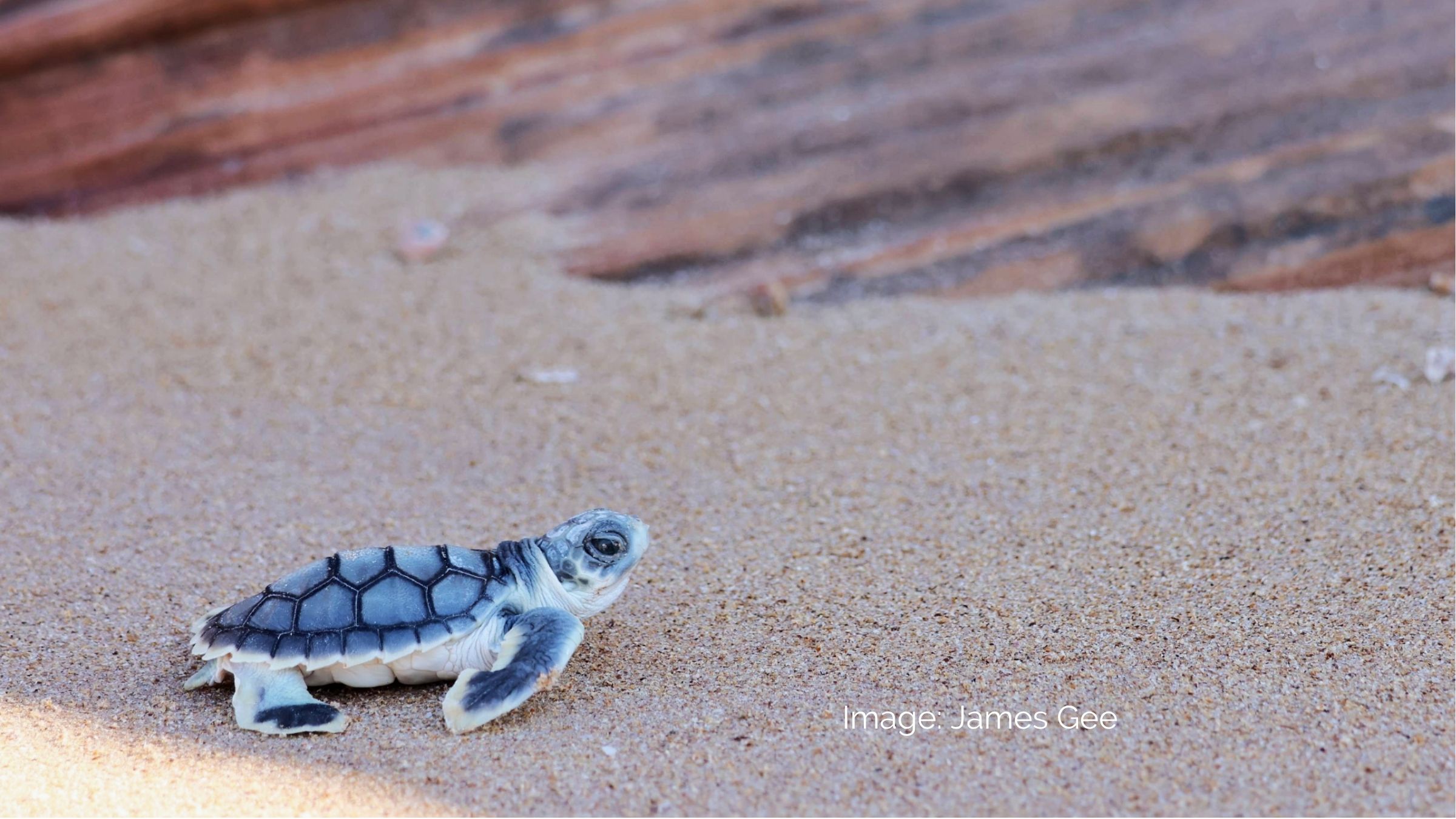Light Pollution is a captivating collaboration between several partners, including Astrotourism WA.
Scitech’s new gallery is spotlighting how light pollution affects Western Australia’s wildlife and night sky.
Part of Scitech’s Here, There and Everywhere gallery, the Light Pollution exhibit invites visitors to experience how artificial light impacts our night sky and sea turtles. It represents a bold collaboration between Astrotourism WA, the Department of Biodiversity, Conservation and Attractions (DBCA), and Scitech.
Feature image above: Light Pollution Exhibit partners at the launch event held 22nd September 2025. Left to right: Carol Redford, CEO, Astrotourism WA;
Tristan Simpson, Senior Environmental Officer North West Shelf Flatback Turtle Conservation Program, DBCA; Clodagh Guildea, Project Officer, North West Shelf Flatback Turtle Conservation Program, DBCA; and Kimberley Phoon, Content Producer – Exhibitions, Scitech. Credit: Scitech
Light pollution is the unnecessary or poor use of artificial outdoor light. It disrupts normal wildlife behaviours, affects the human sleep cycle, and hides our view of the stars.
An immersive sensory experience, Scitech’s Light Pollution exhibit allows curious minds to explore the effects of artificial light and consider how they can make positive changes to help limit it.
Carol Redford, CEO of Astrotourism WA, says WA’s night sky is a world-class natural asset:
“The Light Pollution exhibit is an important inclusion in Scitech’s Here, There and Everywhere gallery. In a world where some children grow up not seeing a single star in the night sky due to light pollution, children here in WA will grow up with an understanding of the impacts, and how to minimise it.
“This will safeguard our view of the night sky and protect fauna for generations to come,” Redford says.
The new Scitech Light Pollution Exhibit in action. Video credit: Clodagh Guildea, Department of Biodiversity, Conservation and Attractions
Natural behaviours and biological rhythms
While life on Earth has evolved under predictable cycles of day and night, artificial light at night disrupts natural behaviours and biological rhythms.
Western Australia hosts flatback, green, hawksbill and loggerhead marine turtles, with critical habitat across our coast for breeding, foraging, resting and migration.
DBCA Senior Environmental Officer Tristan Simpson says light pollution impacts sea turtle species in various ways, with adults deterred from nesting and hatchlings following lights and becoming lost, making them vulnerable to predators.
“Artificial light pollution is one of the greatest threats to marine turtles, particularly in the Pilbara region of Western Australia.”
Immersing visitors on a beach in the Pilbara during hatching season, Light Pollution uses interactive projection technology to demonstrate how industrial and domestic lighting affects turtle hatchlings and the night sky.
Exhibition visitors will experiment with using a central console to adjust the lighting levels and help hatchlings to navigate their way safely to the ocean.

Artificial light at night can draw turtle hatchlings away from the ocean.
William Peng, Scitech General Manager of Exhibitions and Operations, says: “This immersive exhibit is part of Scitech’s permanent gallery transformation – Here, There and Everywhere – which explores how science and technology solve challenges in our homes, in the Western Australian community, and around the world.
“Here, There and Everywhere is Scitech’s biggest exhibition transformation in our 37-year history, with the majority of exhibits designed and built onsite at Scitech.
“We hope that this new interactive light pollution exhibit will inspire curiosity and highlight how science and technology can be used to help protect threatened species.”
We can all do our part to reduce and limit light pollution. The Australasian Dark Sky Alliance offers six best practice lighting principles, which help every Australian implement solutions for reducing light pollution at home.
Help protect our dark skies
Pledge your support for dark skies and the protection of nighttime environments.

